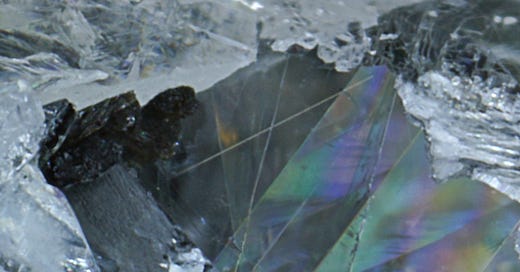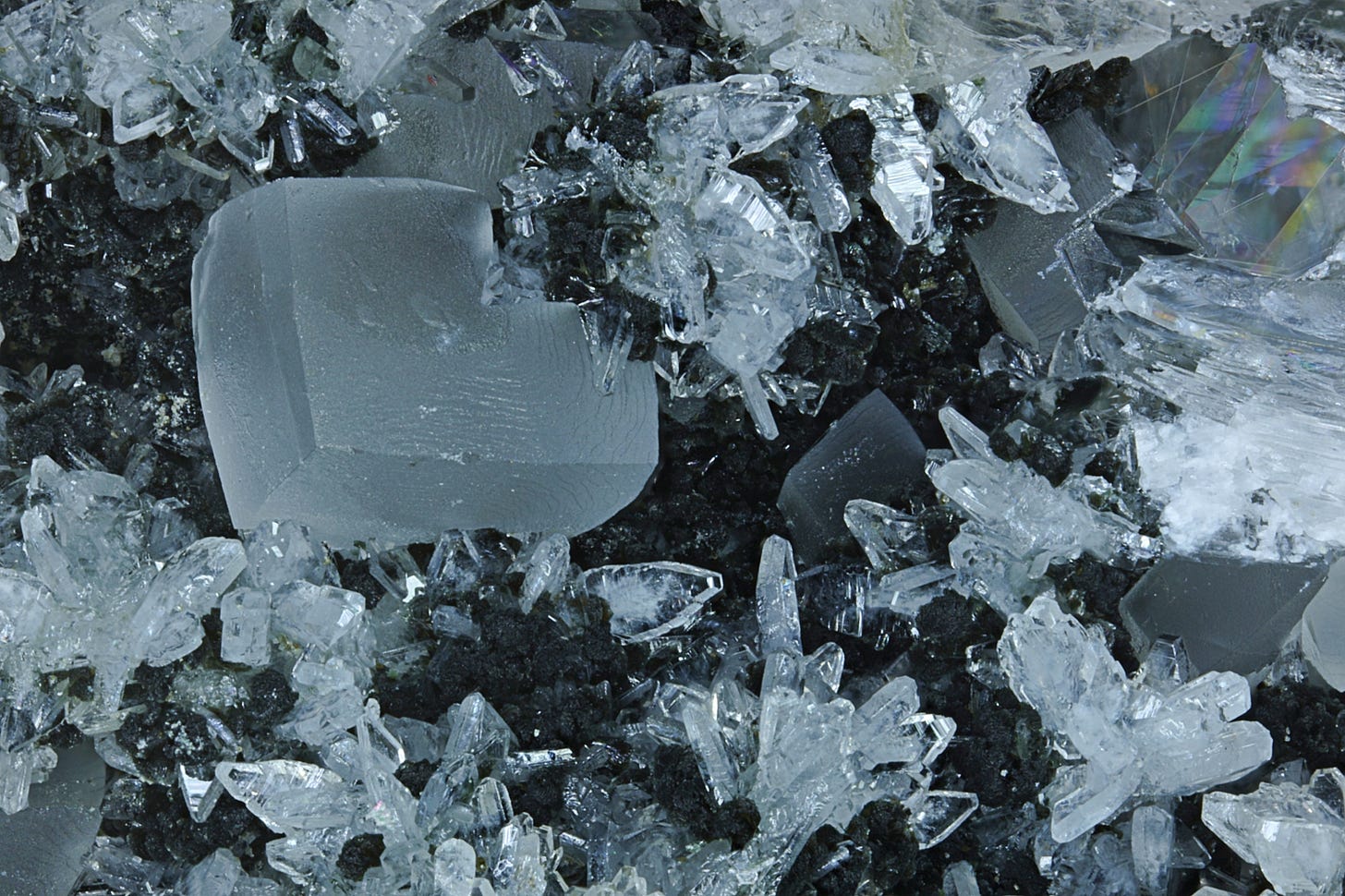In a recent photo that I took, I noticed distinct lines on a face of a cleaved calcite crystal.
What were they? The answer is cleavage lines. So what is cleavage in minerals?
Cleavage is the tendency of a mineral to break along specific, flat, smooth planes of weakness within its crystal structure. Think of it like splitting wood along the grain – it breaks much more easily and cleanly in that direction than across the grain.
Why does this happen? Minerals are crystalline solids, meaning their atoms are arranged in a highly ordered, repeating three-dimensional pattern (the crystal lattice). In many crystal structures, the bonds between atoms are stronger in some directions than in others. Cleavage occurs along the planes where these atomic bonds are weakest.
Cleavage surfaces are notably flat and often appear shiny or reflective. A mineral will always cleave along the same specific planes, dictated by its crystal structure. If a mineral has more than one cleavage direction, the angles between those cleavage planes are constant and characteristic for that mineral.
This contrasts with fracture. If a mineral breaks in a way that is not along flat cleavage planes (eg: it shatters irregularly, like glass), this is called fracture. Fracture happens when the bond strengths are roughly equal in all directions, or when the stress applied doesn't align with a weak plane.
Calcite exhibits perfect cleavage in three directions that are not at right angles to each other (approx. 78°/102°). This causes calcite crystals, when broken, to typically form rhombohedral fragments, a very distinctive characteristic of the mineral.
Below: Calcite, Andesite quarry, Kreimbach-Kaulbach, Wolfstein, Palatinate, Rhineland-Palatinate, Germany. Cropped top right corner from second photo.
Below: Albite, Analcime, Calcite, Julgoldite-(Fe2+), Andesite quarry, Kreimbach-Kaulbach, Wolfstein, Palatinate, Rhineland-Palatinate, Germany. Width of view 6mm.





